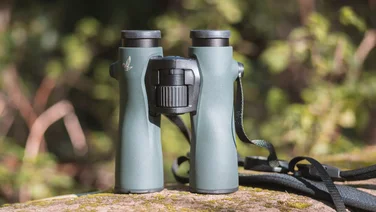To help us provide you with free impartial advice, we may earn a commission if you buy through links on our site. Learn more





Sonys Alpha NEX series of cameras are two of the smallest system cameras available today. We looked at the Alpha NEX-5 a couple of months back and while it was undoubtedly a beautiful camera with DSLR-like image quality, some of the choices Sony had made meant the camera was often frustrating to use particularly when using the aperture priority, shutter priority or manual modes because regularly-used functions were buried in a unique, but fragmented menu system.
The company has taken the feedback on-board and, as a result of that, a new firmware version designed to correct many of the original complaints was announced at Photokina in September. Just a day after our NEX-3 sample arrived in the Expert Reviews labs, the new firmware version was released, which is what we’re testing here.

The NEX-3 is slightly bigger than the NEX-5 and, despite being made from plastic, it still feels incredibly well-built. It doesnt invite you to take pictures in quite the same way that the NEX-5 achieved and doesnt feel quite as sturdy in your hand. This is down to both the hand grip being much less prominent and, as a result of this, the subsequent relocation of the shutter button which has been combined with the power switch.

With the 18-55mm kit lens attached, the centre of gravity is in front of the NEX-3s body, making it feel front heavy. The NEX-5 also feels front heavy, but because the hand grip is larger, a firmer grip can be established. With the tiny 16mm f/2.8 pancake lens on the front of the NEX-3, the camera is a little sturdier, but we still found ourselves wanting a firmer grip as its a good deal heavier than a typical compact camera and its not truly pocketable either.
The NEX-3s specs are almost identical to its more slender brother and the same 14.2 megapixel APS-C (23.4×15.6mm) sensor is at the heart, meaning that image quality is just as good as the NEX-5s. It also has the same image processor, meaning continuous shooting rates and general operation performance are pretty good, but Sony has decided to limit the NEX-3s HD video recording mode to 1,280x720p at 30fps in the M-PEG4 format. The NEX-5s video mode supported recording in AVCHD at 1,920×1,080i at 50fps.
Sensitivity also still ranges from ISO 200 to 12,800, with Auto ISO is limited to ISO 1600 even with the new firmware which kind of defeats the point of having such a large sensor in the first place. Like the NEX-5, the NEX-3 produces usable high resolution images right the way up to ISO 3200 and, if you only want to use the photos in smaller sizes, you can just about get away with ISO 6400 before having to resort to attaching the supplied pop-up flash.

The 18-55 lens does exhibit some distortion throughout its focal range with the worst of it being around the 35mm (approx. 50mm equivalent) focal length. Despite this, images are sharp with only minor softening in the corners at the telephoto end of the zoom. Theres slight chromatic aberration, but its barely noticeable and theres very little evidence of vignetting.
Image stabilisation on the 18-55 is good for about three stops too, further enhancing the NEX-3s low-light capabilities. Our only complaint on that front is that the auto-focus system does tend to search a little, but not quite as badly as on the NEX-5, where its impossible not to cover the focus assist lamp.
The tweaks made in the new firmware arent huge, but they make a remarkable difference to how the camera handles. The biggest change is that the central and lower soft buttons on the back can now be customised. Sony calls the lower button Soft key B and the central button Soft key C and their functions can be set in the Setup menu.

Soft key B can be set to one of ten functions, which include important functions like ISO, White Balance and MF Assist (which magnifies the Live View to aid manual focusing). Soft key C, on the other hand, can either be used for its default virtual mode dial or be given up to three functions from a list of seven.
These include Auto Focus Area, ISO, White Balance and DRO/Auto HDR. Theres also the option to select Not set for any of the three custom options, meaning you only need to cycle through the functions that you want while using the camera.
Choosing these functions carefully meant we very rarely needed to delve into the cameras menu system to change important settings. We found that the best combination was to set Soft key B to MF Assist (or ISO if you dont use manual focusing at all) and Soft key C to ISO, White Balance and DRO/Auto HDR. If MF Assist isnt useful for you and you instead opt for ISO control on Soft key B, set the third Soft key C function to Auto Focus Area.

Overall, while the new firmware makes a remarkable difference to the NEX-3s and by extension NEX-5s usability, the NEX-3 didnt give us the same joy as its smaller sibling. Of course, its £110 cheaper than the NEX-5 and it produces images of the same calibre, which carries a lot of weight, and makes it one of the cheapest compact system cameras out there. If it was our money, wed recommend saving that little bit longer to get the NEX-5, but the NEX-3 is a great option for those looking for DSLR-like image quality but dont want the bulk.






